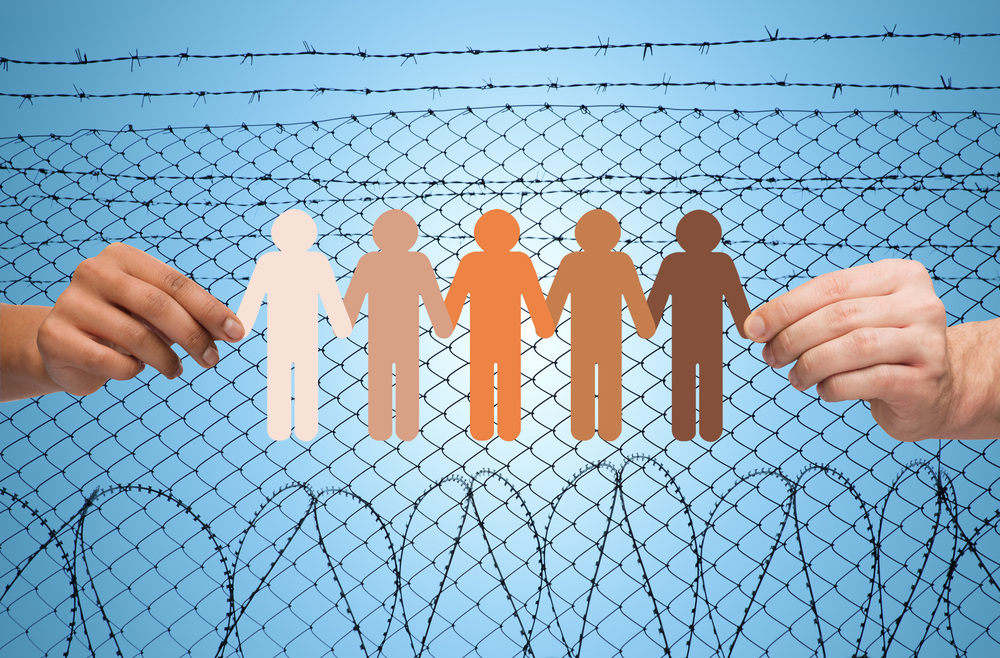The approach to the treatment of youthful offenders has changed dramatically in the last 20 years. Systemic models that once focused on using vocational training as a means of rehabilitation have recently evolved into mental health-focused treatment programs and reentry efforts. Diversion programming and restorative justice have replaced reform schools, as a juvenile justice reformation is in full swing nationwide. Conversations among practitioners, academicians and policymakers seem to be producing meaningful progress related to youth justice issues.
For more information on Racial-Ethnic Fairness, go to JJIE Resource Hub | Racial-Ethnic Fairness
But despite the systemic changes implemented to reform the justice process for young people, and the success of explicitly pursuing treatment over punishment, racial disparities remain prevalent in virtually every decision-making point within the juvenile justice system. The color of the shrinking pool of justice-involved young people highlights the systemic challenges facing youth of color.
Illusion of trickle-down success

Jonathan Glenn
Jonathan Glenn
The trickle-down economics model, which asserts that tax breaks for the wealthy would (theoretically) benefit the working class, has been criticized by economists and both conservative and liberal politicians. Instead of the money eventually making it to the working class via new job opportunities, economists argue the money is ultimately hoarded by the wealthy. Similarly, the framework for addressing racial disparities by reforming the justice system has not had the intended consequences. In some cases, racial disparities have become more pronounced in the midst of reform efforts.
In North Carolina, both short-term confinement (youth detention) and longer-term confinement (youth development center) admissions have declined by 33 percent and 50 percent respectively over the last five years. Despite this accomplishment, minority youth represent 75 percent of all detention admissions and 85 percent of all youth development center commitments, while only accounting for roughly 20 percent of the general population in North Carolina.
Similar disparities likely exist within the intake data of diversion and community-based treatment programs that have become a popular alternative to formal court processing. Rather than eliminating the systemic issues contributing to disproportionate minority contact (DMC), reform initiatives seem to be shifting these disparities to other areas of justice system.
It looks and smells like success related to racial disparities, but in actuality, disproportionality is as serious an issue today as it was 20 years ago.
The progress related to the deinstitutionalization of youth for minor offenses is undeniable and consistent with research related to best practices. However, we cannot commingle that success with the needs of minority youth. Changes in philosophy about the treatment of youthful offenders is a separate issue from the overrepresentation of minority youth in the justice system, and must be addressed as such.
Staying focused and joining forces
Issues specific to race and ethnicity continue to be polarizing in the United States. Much like other racially charged conversations, the overrepresentation of minority youth in the justice system provokes a range of responses from juvenile justice practitioners, policymakers and stakeholders. Tough conversations related to racial justice are likely to make some feel uncomfortable, but are necessary to facilitate change.
Issues such as implicit bias, which refers to involuntary, unconscious thoughts and attitudes driven by traces of past experiences that directly influence an individual’s behavior, and systemic changes relative to the juvenile justice decision-making process require substantive discourse. We must be willing to evaluate the manner in which we think about minority youth and assess our own biases if we expect to see real progress.
Our commitment to the issue of racial justice has to be stronger than our commitment to the friendly confines of our comfort zone. If we can make coordinated and calculated changes to the juvenile justice system to ensure that youth receive the best that we have to offer, then we do the same in our fight against racial disproportionality.
Despite a lengthy history of initiatives aimed at reducing racial disparities and a renewed sense of energy related to juvenile justice reform, work related to DMC appears to be fragmented and disorganized. Approaches seem to vary between local jurisdictions and states, as some areas are focused on identification of the issue, while others have conducted rigorous evaluations and are implementing sound interventions.
Beyond the chosen approach to address racial justice, stakeholders must do a better job of documenting the details of their efforts and capturing any areas of success. We seem to reinvent the wheel relative to racial disproportionality rather than learning from what we have done and coordinating next steps. Local DMC efforts should work to connect with stakeholders from corresponding efforts in other jurisdictions to maximize progress and avoid the pitfalls of previous lessons learned.
The work of addressing racial disparities in the justice system is difficult and complex. The work is also an essential component of juvenile justice reform. The optics of progress is a potentially dangerous obstacle in the fight against disproportionality in the justice system. Because youth of color cannot afford for us to be satisfied with optical success, we must do all we can to get the most from our labor.
Jonathan W. Glenn is the associate director of the Juvenile Justice Institute at North Carolina Central University. He can be reached via e-mail at jglenn8@nccu.edu.

Thanks for the great article, Jonathan. We still have a lot of work to do. We have to focus not only on the CJS but dysfunctional families and poverty.
Great article, Jonathan. Until we reach out to the systemic issues of dysfunctional families and poverty, we are still fighting the battle.